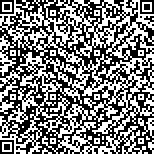| 摘要: |
| 黑潮与东海生源要素的交换对东海的生态环境有重大影响,交换主要是经台湾东北部海域输送至东海陆架和通过日本九州西南海域由东海陆架向外海的黑潮输出两个通道。中国科学院海洋先导专项对黑潮与邻近东海生源要素的交换特征进行了系统的调查和研究,获得了一些新的认识:(1)在台湾东北部区域,碳主要以表层水-次表层水为载体输入,秋季的输入量高于夏季;黑潮溶解态营养盐的输入占据绝对主导地位,且以黑潮次表层热带水-中层水的输入为主,输入通量春季高于夏、秋季,可为东海春季水华提供一定的物质基础,但输入到东海的黑潮水其氮磷比与Redfield比值(16:1)接近,这些“正常水”——黑潮的输入显然对调和东海异常高的氮磷比有重要的作用,从而对东海的生态环境起到“稳定和缓冲”作用。所以,黑潮水对东海的输入不仅维持补充了东海生态系统运转所需的生源要素,更为重要的是缓冲了受人为影响强烈的东海海水的高氮磷比,使东海本已失常的营养盐结构向合适的氮磷比方向转变。因此,黑潮与东海生源要素的输入在一定程度上起着稳定和缓和东海生态环境的作用。(2)通过构建的海水Ba-盐度新指标体系,定量细致刻画了黑潮对东海生源物质在台湾东北部区域的输入范围和程度,黑潮次表层水从台湾东北陆架坡折处沿底部向北偏西方向入侵东海,其近岸分支可以入侵到浙江近岸,其黑潮次表层水占比仍可达到65%左右。垂直方向上,陆架外侧站位受黑潮次表层水的影响范围更大,黑潮水占50%比例位置可延伸至外侧TW0-1站位(122.59°E,25.49°N)表层,而内侧靠近大陆的站位则只限于陆架中部位置底层。 |
| 关键词: 生源要素 交换通量 稳定和缓冲作用 黑潮水 东海陆架 |
| DOI:10.11693/hyhz20170900234 |
| 分类号:P731.27;P734 |
| 基金项目:中国科学院战略性先导科技专项(A类),XDA11020102号;青岛国家海洋实验室深海预研专项,2016ASKJ14号;“鳌山人才”计划项目,2015ASTP-OS13号。 |
|
| EXCHANGE AND ECOLOGICAL EFFECTS OF BIOGENIC ELEMENTS BETWEEN KUROSHIO AND ADJACENT EAST CHINA SEA |
|
SONG Jin-Ming1,2,3, YUAN Hua-Mao1,2,3
|
|
1.Key Laboratory of Marine Ecology and Environmental Sciences, Institute of Oceanology, Chinese Academy of Sciences, Qingdao 266071, China;2.University of Chinese Academy of Sciences, Beijing 100049, China;3.Laboratory for Marine Ecology and Environmental Science, Qingdao National Laboratory for Marine Science and Technology, Qingdao 266237, China
|
| Abstract: |
| The exchange of biogenic elements between Kuroshio and the East China Sea has a significant impact on the ecological environment of the East China Sea. The exchange takes place as water goes into the East China Sea shelf from the northeastern coast of Taiwan and goes out of the East China Sea through Kyushu southwestern waters. Some new insights have been achieved by the observations of chemical properties in both the Kuroshio and the adjacent East China Sea. In the northeastern region off Taiwan, the input of carbon is mainly from the surface water and subsurface water with the flux higher in autumn than that in summer, while the nutrient fluxes which almost in dissolved forms are mainly originated from subsurface water and intermediate water and with the higher flux in spring than that in summer and in autumn, which would favor spring bloom in the East China Sea. The Kuroshio intrusion features by its N/P ratio that nearly the same to the Redfield ratio and can alleviate the extremely high N/P ratio in nearshore the East China Sea. Based on the geochemical characteristics of dissolved barium (Ba) and salinity in both Kuroshio and East China Sea waters, the Kuroshio subsurface water intrusion can be traced with the current northwest along the bottom of the middle shelf from the break shelf northeast of Taiwan to the Qiantang River estuary, where the proportion of Kuroshio subsurface water was nearly 65%. In vertical, the influence of Kuroshio subsurface water was more significant in the outer shelf water and its proportion in TW0-1 surface water could reach 50%, but the influence was relatively smaller in bottom water and within the middle of the shelf. |
| Key words: biogenic elements exchange flux buffering effect Kuroshio water East China Sea shelf |
